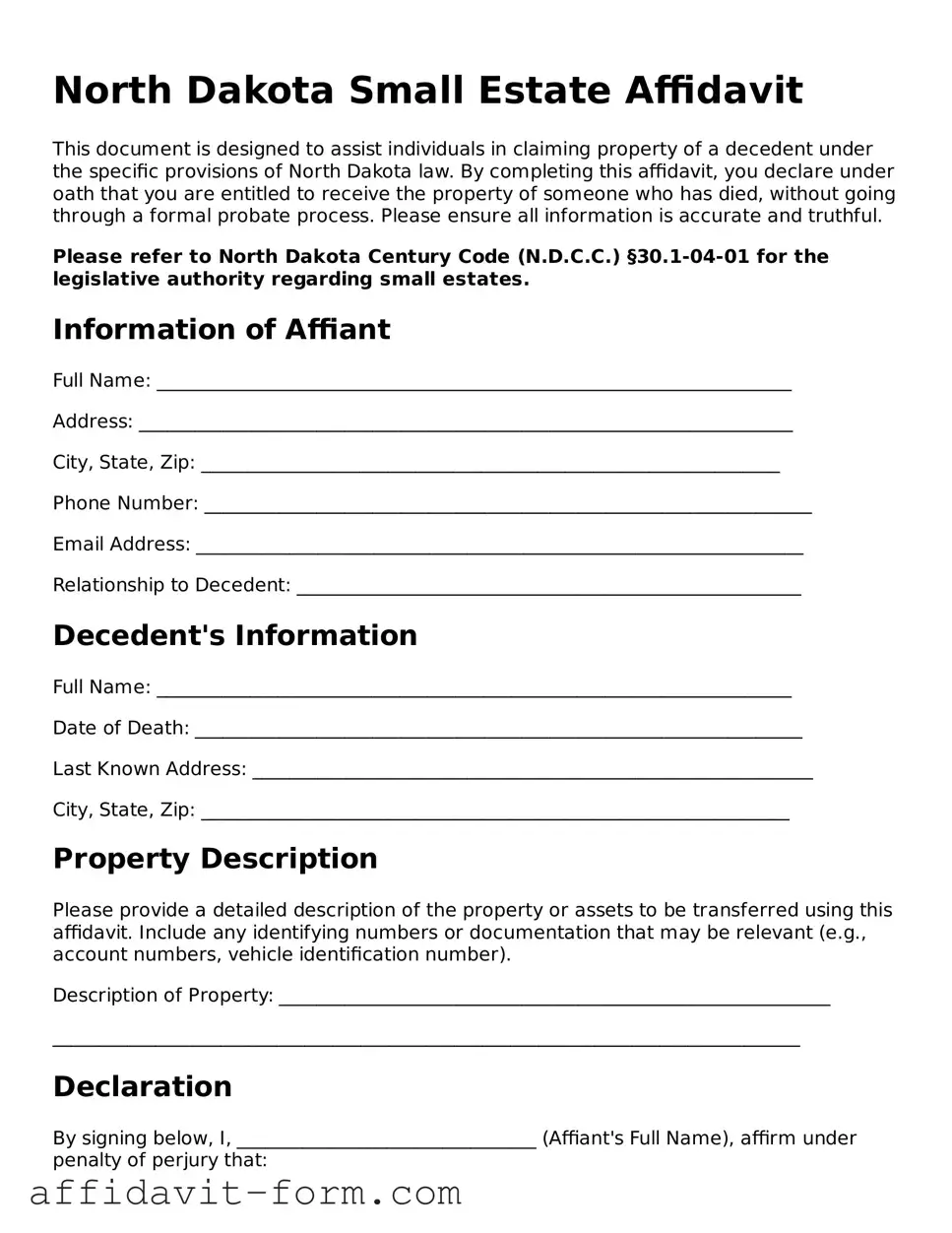North Dakota Small Estate Affidavit
This document is designed to assist individuals in claiming property of a decedent under the specific provisions of North Dakota law. By completing this affidavit, you declare under oath that you are entitled to receive the property of someone who has died, without going through a formal probate process. Please ensure all information is accurate and truthful.
Please refer to North Dakota Century Code (N.D.C.C.) §30.1-04-01 for the legislative authority regarding small estates.
Information of Affiant
Full Name: ____________________________________________________________________
Address: ______________________________________________________________________
City, State, Zip: ______________________________________________________________
Phone Number: _________________________________________________________________
Email Address: _________________________________________________________________
Relationship to Decedent: ______________________________________________________
Decedent's Information
Full Name: ____________________________________________________________________
Date of Death: _________________________________________________________________
Last Known Address: ____________________________________________________________
City, State, Zip: _______________________________________________________________
Property Description
Please provide a detailed description of the property or assets to be transferred using this affidavit. Include any identifying numbers or documentation that may be relevant (e.g., account numbers, vehicle identification number).
Description of Property: ___________________________________________________________
________________________________________________________________________________
Declaration
By signing below, I, ________________________________ (Affiant's Full Name), affirm under penalty of perjury that:
- The value of the entire estate subject to disposition does not exceed the statutory threshold specified in N.D.C.C. §30.1-04-01.
- At least forty days have elapsed since the death of the decedent.
- No application or petition for the appointment of a personal representative is pending or has been granted in any jurisdiction.
- I have a legal right to claim the property described above and have provided notice to all parties having an interest in the estate.
- All debts of the decedent, including funeral and burial expenses, have been paid or adequately provided for.
- I indemnify and hold harmless all parties relying upon this affidavit from all claims, demands, and other liability that may arise as a result of their reliance on this document.
Date: ___________________________
Signature of Affiant: ________________________________
State of North Dakota
County of _________________________
Subscribed and sworn to (or affirmed) before me this ______ day of _______________, 20____, by ________________________________________ (Affiant's Full Name).
______________________________________
(SEAL) Notary Public
My Commission Expires: __________________
